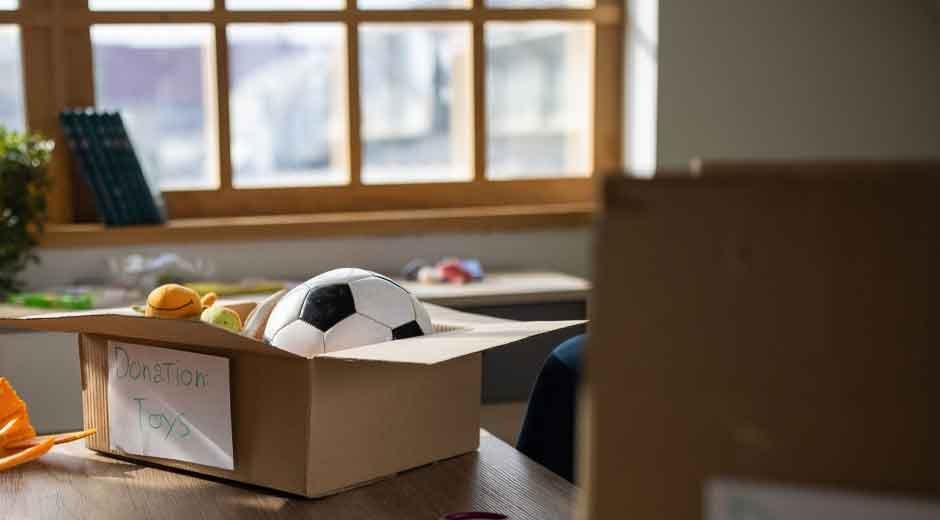It’s easy to assume that clutter means it’s time to toss things out. But often, the problem isn’t too much stuff—it’s unused space that could be working smarter. Reusing the space you already have can keep your home cleaner, help the environment, and save money along the way.
By looking at corners, walls, and forgotten spots with fresh eyes, it’s possible to reduce waste and keep what matters most. Simple adjustments can make a big difference in how a home feels and functions.
Observation:
Many people end up throwing away things they still value because they run out of space, not because the items are truly useless. Reusing space smartly can change that story, creating room to breathe without waste.
Why Reusing Space Matters
Throwing things away isn’t always the best or only option. Many times, the issue isn’t the number of items but how space is being used. Closets, garages, basements, and even kitchen cabinets often have hidden potential waiting to be unlocked. By rethinking how space is organized, you can reduce clutter without losing the things you actually need. Reusing space is a practical step that saves time, reduces waste, and creates a cleaner living environment.
This approach is also budget-friendly. Instead of buying new storage containers or furniture, it focuses on making better use of what’s already there.
Expert statement:
A home organization specialist explains that most households underutilize at least 30% of their available space. By reorganizing shelves, adding simple dividers, or using vertical areas, people can keep more of what matters while maintaining a tidy, functional home.
Rethinking Unused Corners
Every home has spaces that are often overlooked: the back of closets, the space under beds, empty corners, or wall areas. These spots can become useful storage with just a bit of creativity. Instead of seeing them as dead space, treat them as opportunities.
Using stackable bins, shelves, or hooks can help transform wasted space into practical storage. For example, a corner with a few hooks can hold bags or coats, while a shelf above a doorway can store seasonal items. Rethinking space this way helps reduce clutter naturally without the need to toss everything out. It’s about working smarter, not harder.
Creative Storage Solutions
Many people have similar questions when it comes to reusing space effectively. Here are a few common concerns and clear answers to help make organizing simpler.
How can I reuse space without making it look crowded?
Start by using vertical areas like walls, corners, and shelves. This keeps the floor clear and creates a cleaner, more open look while still storing your belongings.
What can I do with items I’m not ready to let go of?
If you’re not ready to throw things away but don’t have room at home, using secure self storage in Ontario can help. It’s a smart way to keep items safe while making more space at home.
How do I avoid clutter when reusing space?
Label everything clearly, group similar items together, and use storage solutions that make access easy. The goal is to create systems, not just stack things away.
How often should I reorganize reused spaces?
Checking every few months keeps everything fresh and prevents clutter from creeping back in. A quick refresh goes a long way.
Giving New Life to Old Items
Reusing space doesn’t always mean creating storage—it can also mean rethinking how things are used. Old furniture, containers, or baskets can be repurposed into practical solutions that keep spaces tidy. These quick tips can help you get started.
- Turn unused shelves into organized stations.
- Repurpose boxes or baskets for small items.
- Hang hooks in underused corners.
- Use the backs of doors for extra storage.
- Add dividers to deep drawers for order.
- Transform old furniture into smart storage.
- Keep everything labeled and easy to find.
Benefits vs risks:
The benefits include less waste, more space, and lower costs. The risks come from piling items without structure, which can lead to clutter again. Clear systems keep everything balanced.
Building Simple Systems
A couple with two kids found themselves constantly overwhelmed by clutter. They didn’t want to throw everything away because many items still had value or sentimental meaning. The problem wasn’t the things themselves—it was the way their space was being used. Closets were packed unevenly, corners were wasted, and drawers overflowed with random items.
They decided to make small, practical changes. First, they reorganized their closet using stackable boxes and labeled bins. Then they added shelves to corners that had been empty for years. A narrow wall became a spot for hooks to hang bags and coats, while under-bed storage opened up more closet space. These little changes gave them back the feeling of control over their home. It wasn’t about owning less; it was about using what they already had more wisely.
Key takeaway summary:
Reusing space doesn’t have to be complicated or expensive. It starts with noticing unused areas, adding simple storage solutions, and creating easy-to-follow systems. With a little creativity and consistency, it’s possible to keep what matters, reduce stress, and make a home feel more spacious without throwing things away.
Final Thoughts
Making the most of the space you already have can change the way your home feels. Instead of letting clutter build or tossing out meaningful items, reusing and reorganizing brings balance.
Practical ways to reuse space before throwing things away give you more options, more comfort, and less waste. With just a few smart habits, even small spaces can become well-organized and easy to enjoy every day.


